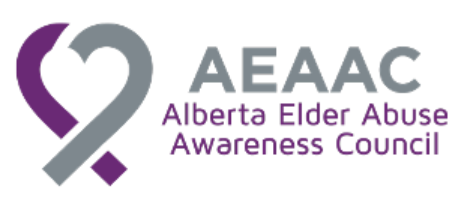- Details
- Published: 01 September 2015
By Heather Campbell
Many factors influence our health and well-being. Most often, we think of individual factors such as family history or our personal decisions about smoking, diet, exercising and alcohol consumption. Increasingly, however, there is a growing focus on the societal factors that shape our health. According to the Canadian Council on Social Determinants of Health, these societal conditions “include the work we do, our level of education, our income, where we live, the quality of our experiences when we are children and the physical environment that surrounds us.”
With respect to seniors care, the Canadian Medical Association recently noted that:
“Efforts to improve wellness and prevention must go beyond the health care system to encompass the life factors that shape each person’s overall health and wellbeing—the social determinants of health [the SDOH]. Income security, safe housing and access to good food and social connections are all issues to be addressed by a national seniors strategy.”
While not an exhaustive list, other SDOH include Aboriginal status, disability, gender, race, social exclusion, unemployment and job security (Mikkonen & Raphael, 2010 at 9).
The World Health Organization also identifies economic policies, social policies and political systems as SDOH.
With few exceptions, “the law” is not mentioned as a SDOH. In my view, however, it should be viewed as one of the living conditions (social determinants) in society that shapes people’s health and well-being. Take Saskatchewan’s residential tenancies legislation as an example. Under this act, a tenant may be evicted for breaching a material provision of a lease (s. 58(1)(h)). A public housing tenant, however, may be evicted for merely breaching a provision that the landlord reasonably requires the tenant to comply with (s. 58(1)(l)).
By imposing a different—and lower—termination standard on social housing tenants, some of the most vulnerable members of the province face reduced housing security. As I’ve argued elsewhere, “Saskatchewan has created a residential tenancies system in which vulnerable tenants can be evicted more easily than others.”
In this example, it’s the law which is placing lower-income tenants at higher risk of housing instability. Viewing the law as a social determinant of health is a bit like peeling an onion. Access to secure housing is a SDOH, but if we look deeper, it’s the law underlying the situation that is partly determining whether that access will be stable.
I suggest that we can draw similarities between the SDOH and therapeutic jurisprudence (TJ). TJ is an interdisciplinary field of study that views the law as a social force that may produce therapeutic or antitherapeutic consequences (Wexler, 1992 at 32). TJ broadly defines the law to include legal rules, procedures and the behaviour of legal actors (lawyers and judges). Under this approach, researchers look at the law as a social condition that “may itself produce psychological suffering” (ibid.).
While TJ was initially applied to mental health law, it has since been used in many other legal areas. Indeed, it is now understood to be “a psychologically sensitive way to look at virtually all aspects of law and justice” (Erez, Kilchling & Wemmers, 2011 at x). Regarding older adults, TJ has been applied to elder law research generally, as well as specific law and aging issues such as elder drivers and public health; end-of-life decision-making; the medicalization of aging; nursing home regulations; testamentary capacity and undue influence; tort liability and Alzheimer’s disease; and adult protective proceedings.
Therapeutic jurisprudence scholars are interested in law reform, or finding ways to have existing laws applied more therapeutically. As an example, let’s look at the federal government’s recent amendment to the Personal Information Protection and Electronic Documents Act, which came into force on June 18, 2015. The new provision allows banks to disclose personal information without consent to the customer’s next of kin or authorized representative if the bank has reasonable grounds to believe the customer is or may be a financial abuse victim (s. 7(3)(d.3)).
For many of us within the elder abuse prevention community, disclosing suspected abuse to the “next of kin” or “authorized representative” is counterintuitive, as the perpetrators of financial elder abuse are most often family members. As the Canadian Bar Association’s Elder Law and Privacy & Access Law Sections argued:
“Disclosure of information to ‘next of kin’ or ‘authorized representatives’ without the knowledge or consent of the alleged victim, as contemplated in s. 7(3)(d.3), may alert the perpetrator to the bank’s awareness of the abuse, which may increase the likelihood of further harm to the alleged victim.”
Perpetrators may retaliate and try to exert additional control over their victim. In some cases, financial abuse may escalate to physical abuse. In others, psychological abuse may intensify. In addition to the immediate health problems caused by the abuse (e.g., physical injuries, dehydration, overmedication), the mistreatment may also contribute to ongoing health problems, such as chronic depression and anxiety.
While the antitherapeutic consequences of the new disclosure clause remain to be seen, provisions like it demonstrate the law’s role as a social determinant of health. Here, it is the law itself that’s a potential contributing cause of elder abuse—and the victims’ associated negative health outcomes.
Moving forward, I suggest that public health discussions about the SDOH include a greater analysis of the law’s role in shaping the health and well-being of older adults, especially those at risk of abuse. It is hoped that recognizing the law as a social determinant of health will allow for greater interdisciplinary collaboration and advocacy.
References
- Erez, Edna, Michael Kilchling & Jo-Anne Wemmers. “Therapeutic Jurisprudence and Victim Participation in Justice: An Introduction” in Edna Erez, Michael Kichling & Jo-Anne Wemmers, eds., Therapeutic Jurisprudence and Victim Participation in Justice: International Perspectives (Durham, NC: Carolina Academic Press, 2011).
- Mikkonen, Juha & Dennis Raphael. Social Determinants of Health: The Canadian Facts (Toronto: York University School of Health Policy and Management, 2010).
- Wexler, David B. “Putting Mental Health into Mental Health Law: Therapeutic Jurisprudence” (Feb. 1992) 16:1 Law and Human Behavior 27.
Further reading
- Burris, Scott. “From Health Care Law to the Social Determinants of Health: A Public Health Law Research Perspective” (2011) 159 University of Pennsylvania Law Review 1649.
- Kapp, Marshall B. “A Therapeutic Approach” in Israel Doron, ed., Theories on Law and Ageing: The Jurisprudence of Elder Law (Berlin: Springer-Verlag, 2009), 31.
- Schmidt, W.C. “Law and Aging: Mental Health Theory Approach” in Israel Doron, ed., Theories on Law and Ageing: The Jurisprudence of Elder Law (Berlin: Springer-Verlag, 2009), 121.
 Heather Campbell is a Master of Laws student at the University of Saskatchewan.
Heather Campbell is a Master of Laws student at the University of Saskatchewan.
She previously practiced elder law in Vancouver, B.C.
You can follow her on Twitter @SeniorsLaw

















